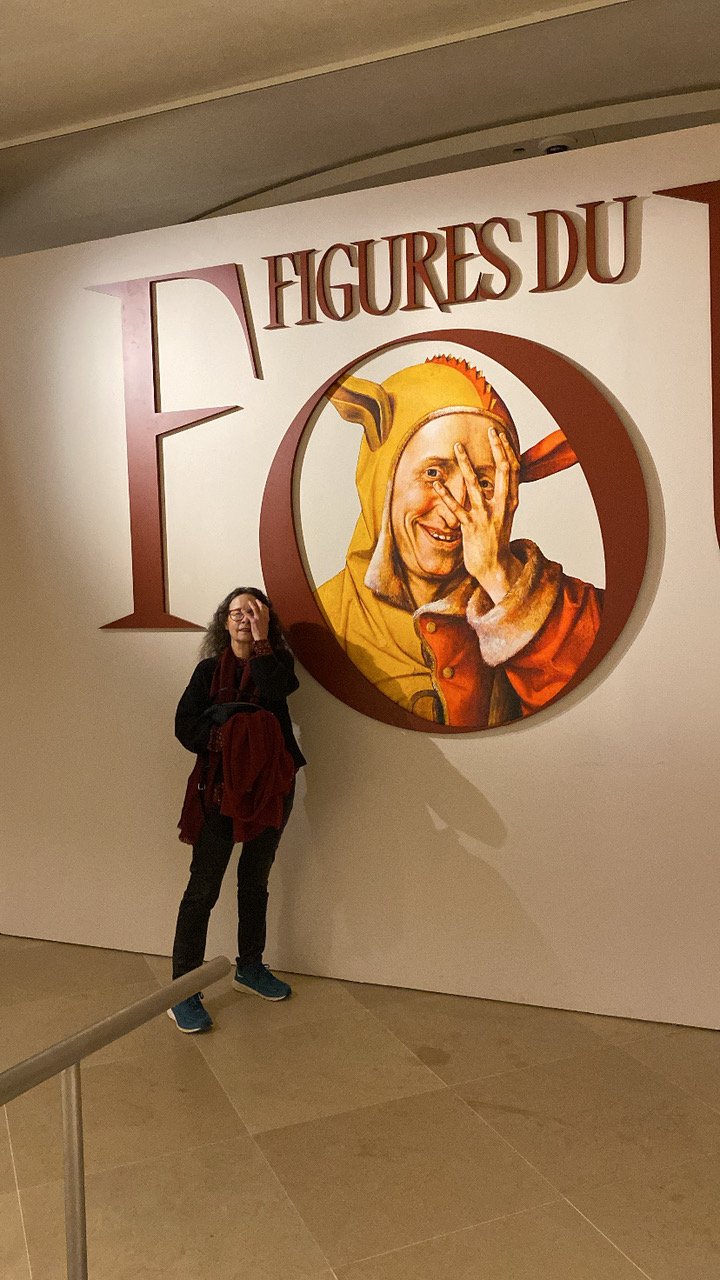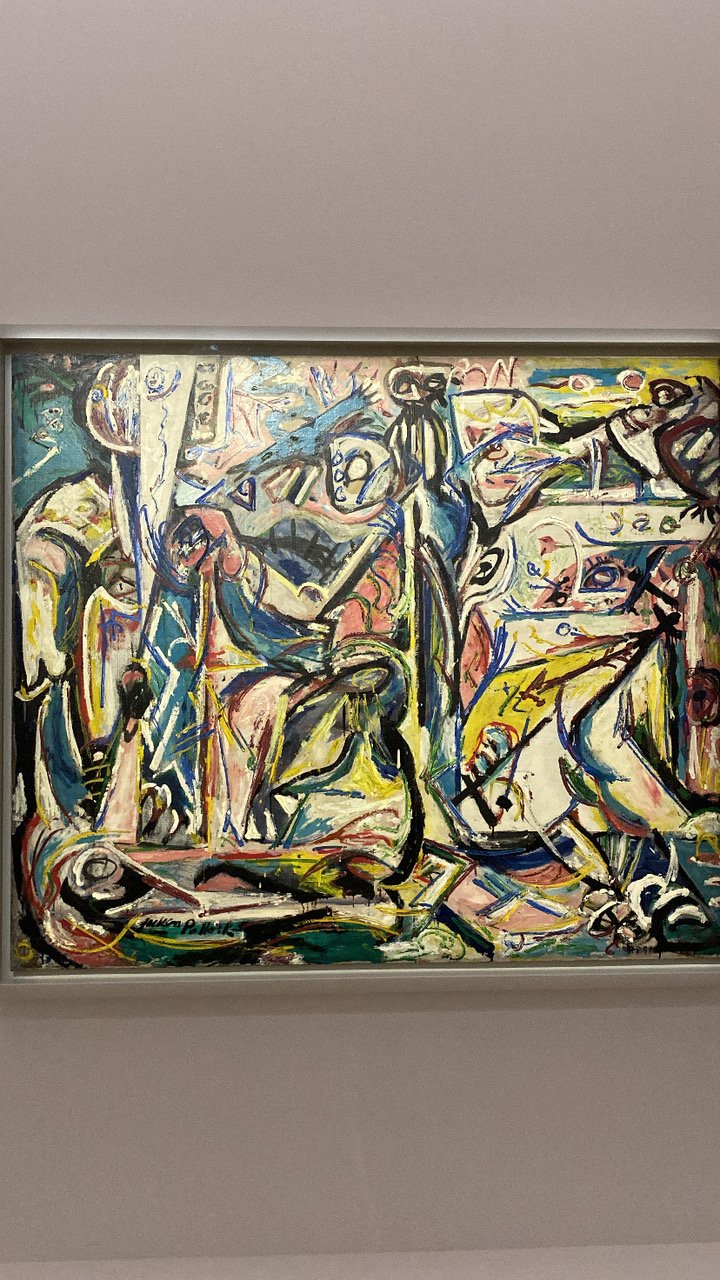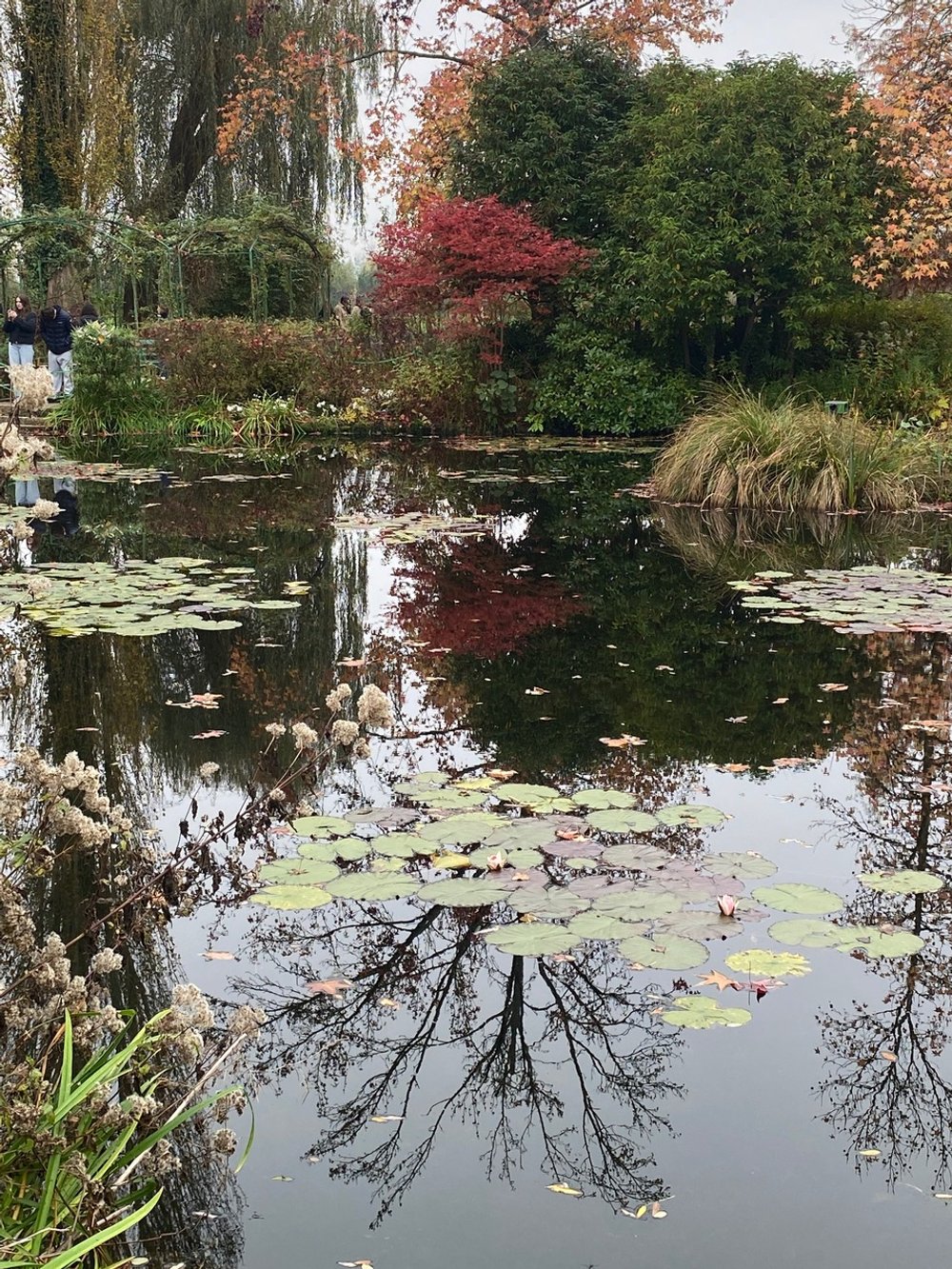Racing to the Finish Line
Paris in Autumn
AI renderings of us as part of the Stephen Jones exhibition
Bienvenue and welcome back to Musée Musings, your idiosyncratic guide to Paris and art. This week, a quick review of the exhibitions Ginevra and I saw in Paris after we returned from Barcelona. Two weeks during which we saw 9 exhibitions, went on 2 excursions out of the city, took walks on the Coulee Vert and Jardin des Plantes. Our final week, before we flew to San Francisco was dedicated to shopping - for chocolates for one of our Advent Calendars and teas for the other.
The end of October/beginning of November is a good time to see temporary exhibitions in Paris which are scheduled to coincide with the rentrée. Which doesn’t just refer to when students return to school in the fall, but to when everyone returns to ‘real life’ - whether that’s school or work - after their long summer holidays. What going back to work means for the museums of Paris is mounting temporary exhibitions.
The first exhibition we saw was at the Musée Carnavalet, ’Paris 1793-94 Une année revolutionnaire,’ (through February 16, 2025) (Fig 1) which highlights the events of 250 years ago. Rich and thought provoking, it reminded me of the exhibition I saw here in 1989, commemorating the 200th anniversary of the Fall of the Bastille, the beginning of the French Revolution. The subject of this exhibition was the same but the focus was much narrower and the treatment much fuller. Augmented with what has become a hallmark of Carnavalet exhibitions, interactive maps and images. A year ago, I wrote about a related exhibition which was at the Museé des Archives Nationales called ‘Louis XVI Marie-Antoinette & La Révolution, La famille royale aux Tuileries (1789 - 1792)’ (Fig 2). Unlike the American Revolution, for which there were a glorious number of marvelous exhibitions in 1976 but not since, (a Museum of the American Revolution opened in Philadelphia in 2017 - I’ve not yet been) the French Revolution remains a constant source of interest for the French people and their art and history museums.
Figure 1. 'Paris 1793-94 Une année révolutionnaire,’ Musée Carnavalet
Figure 2. 'Louis XVI, Marie Antoinette& la Révolution,’ Musé des Archives Nationales
Another day, we walked to the Louvre and saw two exhibitions. I urge, you, if you go to the Louvre, to know beforehand exactly what you want to see - because otherwise you will find yourself trudging along corridors filled with the most splendid paintings - and not even noticing them. The exhibition we went to see was called, ‘Figures du Fou du Moyen Âge aux Romantiques.’ (through February 3, 2025) (Fig 3) There were paintings, drawings, sculpture and tapestries; of clowns and court jesters, of mad men and women. Bosch and Brueghel were there, so were Gericault, Goya and Fuseli. There was a section on St Francis who was considered a fool, insane. Why else would he give his money to the poor and talk to the birds.
Figure 3. ‘Figures du Fou du Moyen Âge aux Romantiques, Musée du Louvre
The second exhibition we saw at the Louvre was a mini-exhibition on Watteau’s painting of Pierrot. (through February 3, 2025) (Fig 4) Which the museum’s conservation team has just restored. I saw a mini-exhibition last year on a painting by Jan van Eyck that I wrote about here: The beauty of these exhibitions, held in the chapel on the 2nd floor (if you’re walking up it feels more like 4 flights, on hard marble steps) is that they take a single painting and then, as if throwing a pebble into a lake, follow through on all the ripples. How fun it was to see Picasso’s portrait of his son as Pierrot here, too.
Figure 4. ‘Re voir Watteau,,,, Pierrot,’ Musée du Louvre
Another day, we went to the Palais Galliera to see an exhibition on the milliner, Stephen Jones, 'Stephen Jones, chapeaux d’artiste.’ (through March 16, 2025) (Fig 5) It was over the top fabulous and the interview with the artist was revealing. As Jones’ website states, “For the first time …at the Palais Galliera, an exhibition is being devoted entirely to an accessory, the hat, treating it as a work of art in its own right. The exhibition focuses on Stephen Jones's creative process, the sources of inspiration behind his pieces, and the role of Paris in his work.”
Figure 5. Stephen Jones Chapeaux d’Artiste, Palais Galliera
One Sunday we walked over to the Bourse to see an exhibition on Arte Povera (Poor Art), (through January 20, 2025) (Fig 6), an art movement begun by young artists in the late 1960s, a rejection of figurative art. The movement focused upon creating art from everyday materials like jute, wood, coal and fabric. (Fig 7) None of the works displayed, (and so many of them were displayed very creatively in the grand central space), were loans. All of the works were from Pinault’s own collection. I knew this art movement but I had never considered the influence it had on contemporary art. Surprisingly, an example of Arte Povera made another appearance later in the week at the Musée Martmottan-Monet. (Fig 8)
Figure 6. Arte Povera, Bourse de Commerce
Figure 7. Arte Povera, Bourse de Commerce
Figure 8. Arte Povera, Bourse de Commerce, which I saw later in the week at the Musée Marmottan-Monet
At the Fondation Louis Vuitton, we saw an exhibition called Pop Forever, on Tom Wesselmann. (through February 24, 2025) (Figs 9, 10) The exhibition was huge, yet somehow empty. I didn’t learn much about Pop Art and I learned even less about Wesselmann. It was fun but the main thing I got out of the exhibition was this: navels (oranges) have nipples! (Fig 11) This Frank Gehry designed museum is always a pleasure to visit. And don’t forget, a ticket to the Fondation permits entry into the contiguous Jardin des Acclimations. Just go out the back door, and you’re there. Even if you don’t want to do anything but walk back to the metro station, it’s more fun to walk in the garden than along the street.
Figure 9. Pop Forever Tom Wesselmann, Fondation Louis Vuitton
Figure 10. Pop Forever Tom Wesselmann, Fondation Louis Vuitton
Figure 11. I’m calling this, ‘Navels have nipples,’ Tom Wesselmann, Fondation Louis Vuitton
There was a tiny exhibition at the Musée Yves St. Laurent (through May 4, 2025) (Fig 12) that I reluctantly went to at Ginevra’s insistence. The subject was flowers and Ginevra has become a keen gardener. But the exhibition was as effervescent as the previous exhibition on transparencies. Which was mostly an ad for the collection of the moment which was mostly diaphanous tops which focused even more than Tom Wesselmann did on breasts and nipples. (Fig 13) The one redeeming aspect of the exhibition for me was that every other panel of text was a quotation from Proust ….. (Fig 14)
Figure 12.' Les Fleurs d’Yves Saint Laurent,’ Musée Yves Saint Laurent
Figure 13. 'Yves Saint Laurent Transparencies,’ Musée Yves Saint Laurent
Figure 14. Proust quote, 'Yves Saint Laurent, Fleurs.’ Musée Yves Saint Laurent
Four more exhibitions to tell you about. At the Musée d’Orsay, we saw an exhibition on Gustave Caillebotte called ‘Painting Men.’ (through January 19, 2025) (Fig 15) There were paintings of working men and men at leisure; men in boats and one famous painting of a man with an umbrella. (Fig 16) There were some men in interior spaces but lots more men - shopkeepers and workers and dandies - all wandering around the Paris that Haussmann created. I visited Caillebotte’s home once, it’s now a museum. He had the luxury of being born into wealth and so was both a collector and a painter who didn’t need to sell any of his own paintings to survive.
Figure 15. ‘Caillebotte Peindre les hommes,’ Musée d’Orsay
Figure 16. ‘Paris Street, Rainy Day,’ Gustave Caillebotte, Musée d’Orsay
We could have stayed at the Musée d’Orsay and seen another exhibition on the work of a little known Norwegian artist, Harriet Backer, whose paintings show an affinity for both realism and impressionism. My friend Morris did see her paintings and did recommend them but we walked over to the nearby Orangerie instead because I wanted to see the exhibition on the art collection of the art dealer, Heinz Berggruen (through January 27, 2025) (Fig 17) who had ties to San Francisco, Paris and Berlin. The collection included some respectable Picassos and lots of Paul Klees; works by Giacommeti and Matisse, too. But what I learned about Berggruen wasn’t as compelling as what I had learned about the art dealer Paul Rosenberg at the exhibition on his life and collection at the Musée Maillol some years back or the exhibition last year at the Orangerie about Paul Guillaume, the art dealer, whose collection is on permanent view at the Orangerie.
Figure 17. Berggruen, Un Marchand et sa collection, ‘ Orangerie
We went to the Musée Marmottan Monet another day. There was a fabulous exhibition on Trompe l’Oeil. (through March 2, 2025) (Fig 18) Do you like trompe l’oeil paintings as much as I do? They aren’t usually about anything other than an artist’s technical skills. The ability to render a wine goblet so convincingly that you imagine you could pick it up and have a drink. That you could rest your elbows on the table, that you could pick the letter up off the table. The designers of the exhibition at the Marmottan-Monet got into the act and added their own trompe l’oeil details throughout the space (Fig 19). One painter, Louis- Léopold Boilly, has been at this museum before, for an entire exhibition dedicated to his work which I wrote about here. There were some surprises, especially in the contemporary section at the end of which was a mirror by a contemporary follower of Arte Povera whose work we had seen at the Bourse. (Fig 20)
Figure 18. Le Trompe-l’Oeil de 1520 à nos jours,’ Musée Marmottan-Monet
Figure 19. Trompe l’oeil exhibition designers added their own trompe l’oeil, here an oculus
Figure 20. A contemporary trompe l’oeil piece with mirror, a version of which we saw at the Bourse de Commerce
The last exhibition we saw, squeezed into the week that was supposed to be dedicated to packing and shopping was at the nearby Musée Picasso. It was about Jackson Pollack, (through January 19, 2025) (Figs 21, 22) his early, pre-drip years. Pollack only had an early period and the beginning of a middle period because he died at age 46, the victim of a car crash. He was driving, he was drunk, one of his passengers died, too.
Figure 21. Jackson Pollock Les Premières Années / 1934-1947, Musée Picasso
Figure 22. The Circumcision, Jackson Pollack, Musée Picasso
The Picasso Museum has settled into a nice routine. In addition to displaying the permanent collection, of Picasso paintings and paintings owned by Picasso, on rotation, the museum mounts temporary exhibitions on artists who were influenced by Picasso. Like Faith Ringgold, like Jackson Pollack. The museum doesn’t try to make Picasso the only or even the main influence but still, an influence. The museum also invites contemporary artists to enter into a dialogue with Picasso, as Orlan did a few years ago. This time, the chapel is filled with a site-specific painting. (Fig 23)
Figure 23. Guillermo Kuitca, Chapel, Musée Picasso
Our two excursions were to Giverny and Versailles. Giverny on the day before the last day of the season. The last day of the season was November 1, a free day and we certainly didn’t want to go that day. It wasn’t the same as visiting in the spring or summer but it was delightful in its own way. (Figs 24, 25) Our second excursion was to Versailles. We stayed out of the chateau, concentrating instead on the Grand Trianon, the Petit Trianon and the Hameau de la Reine. (Figs 26, 27) We wandered around the garden, which is free from November through March. We stayed long enough to see the lights go on, it was magical. The train station at Versailles is only minutes from the Chateau. You have absolutely no excuse not to go! Gros bisous, Dr. B.
Figure 24. Ginevra taking photos at Giverny
Figure 25. Not many waterlilies but beautiful and serene, Giverny
Figure 26. Ginevra wandering around the Petit Hameau de la Reine, Versailles
Figure 27. Ginevra and me in front of Fountain of the Grand Canal, Versailles
Thanks so much to those of you who took time to Comment, Ginevra and I are both grateful for your kind words.
New comments on New comment on All arrows point to Santiago and Barcelona photo journal:
Wonderful!!! Thank you both. Shirley L
Marvelous photo on the Gaudi rooftop…..you’re most fortunate, as they say,
‘the camera likes you !’. Yes, an old Hollywood saying. Bill G. Ohio
Ginevra. Loved your day by day. I felt like I was there with you two. My friend and I were in Santiago 1weeks before you. but we cheated and came by bus an a tour from our cruise. It was inspiring to see all of the people arrive and their reactions after finally getting there. What a great experience for you and your mother!! Deedee, Baltimore
As you know Ben and I were there 2 weeks before you. I couldn’t believe we had to have a ticket to get into the park. Last time we just got off of the hop on hop off bus and walked up the hill into the park no ticket needed. We did get skip the line ticket for the Segrada Familia which got us inside. But the outside is the interesting part. It was crowded but I would not want to be there in the Summer. Next time go up Mountjuïk to the Miro Museum and the National Catalonia Museum. A lot less crowded. Deedee, Baltimore
Ginevra, Thank you for your personal words of your Camino journey. So much of what you wrote reminded me of my Camino journey. Your written words makes the Camino come alive. I enjoyed journal and felt I was walking with you. Thank you, Barb



























